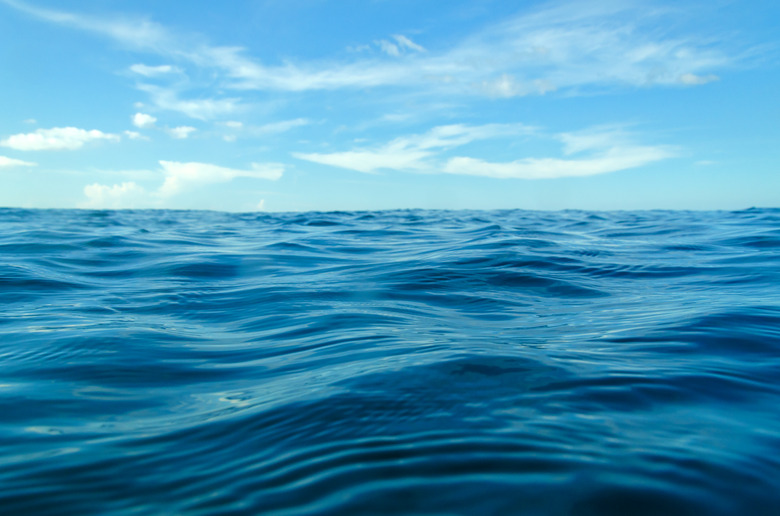Open Ocean Facts For Kids
The ocean is a vast expanse that covers 70 percent of the Earth's surface, with an average depth of 4 kilometers (2.5 miles). Scientists known as marine biologists study the ocean as part of their career, helping humans to understand more about it. While the ocean is enormous and complex, you can familiarize your children with it by giving them fun and useful facts they can share in school and discuss with one another. The ocean is particularly significant because many believe that life on Earth originated in the sea.
Marine Life
Marine Life
Tell kids about marine life and the vast number of animals that live in the ocean. NASA's Ocean Planet web site states that as much as 99 percent of the world's inhabitable space is in the ocean, making this region and those that inhabit it a huge part of life on Earth. The World Register of Marine Species estimates that there are more than 225,000 marine species that have been named. There may be as many as 25 million species that dwell in the ocean, although no one is sure. Challenge kids to name as many kinds of ocean animals as they are able to.
Depth of the Ocean
Depth of the Ocean
The deepest point in the ocean is the Challenger Deep at 11,033 meters (6.9 miles), according to Save the Sea. Help students visualize the 2.5-mile average ocean depth by giving them a context, such as from school to a landmark in town. At Challenger Deep, the pressure is such that it would be equivalent to a person being crushed under 50 jumbo jets. The ocean is so deep that sunlight does not reach most of the ocean floor; both the pressure and darkness make exploration difficult for humans. Tell children that this means the ocean floor is somewhat like a dark room with no windows and no light source.
Seismic Activity and Weather
Seismic Activity and Weather
About 90 percent of the Earth's volcanic activity takes place in ocean. Tsunamis originate from volcanoes and earthquakes that occur underwater. The currents in the ocean, both hot and cold, help regulate the water temperature and play a role in weather patterns on the planet. Children may also find it interesting that the first 10 feet below the ocean's surface contain as much heat as the entire atmosphere above the planet.
Random Facts
Random Facts
Tides in the ocean are caused by the gravitational pull of the moon, making them an integral part of ocean life. The ocean also contains large living structures that are animals but not in the way most children view them. The Great Barrier Reef, located off Australia, is the largest living thing on Earth and can be seen from space. It encompasses an area the size of Great Britain. Students may also be interested to learn that the largest mountain range in the world is actually submerged and that according to Save the Sea, there may be as much as 20 million tons of gold in the ocean.
Cite This Article
MLA
Miller, Fiona. "Open Ocean Facts For Kids" sciencing.com, https://www.sciencing.com/open-ocean-kids-8473756/. 22 November 2019.
APA
Miller, Fiona. (2019, November 22). Open Ocean Facts For Kids. sciencing.com. Retrieved from https://www.sciencing.com/open-ocean-kids-8473756/
Chicago
Miller, Fiona. Open Ocean Facts For Kids last modified March 24, 2022. https://www.sciencing.com/open-ocean-kids-8473756/
